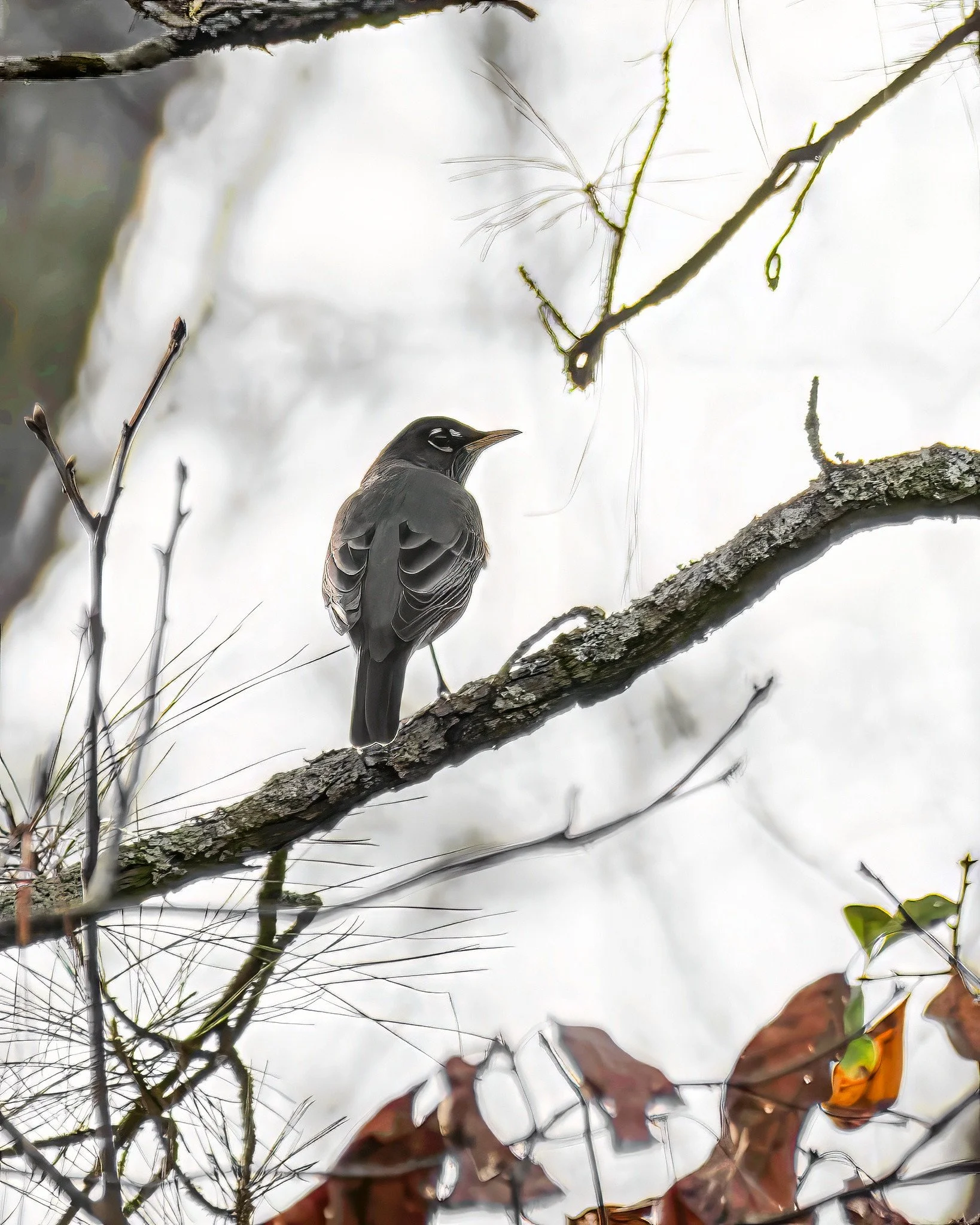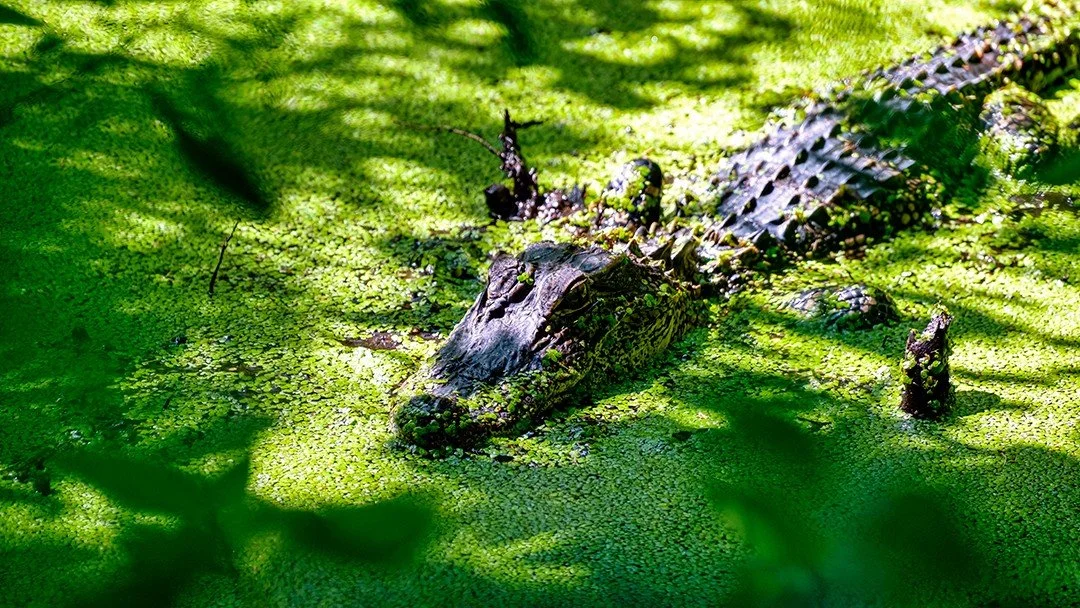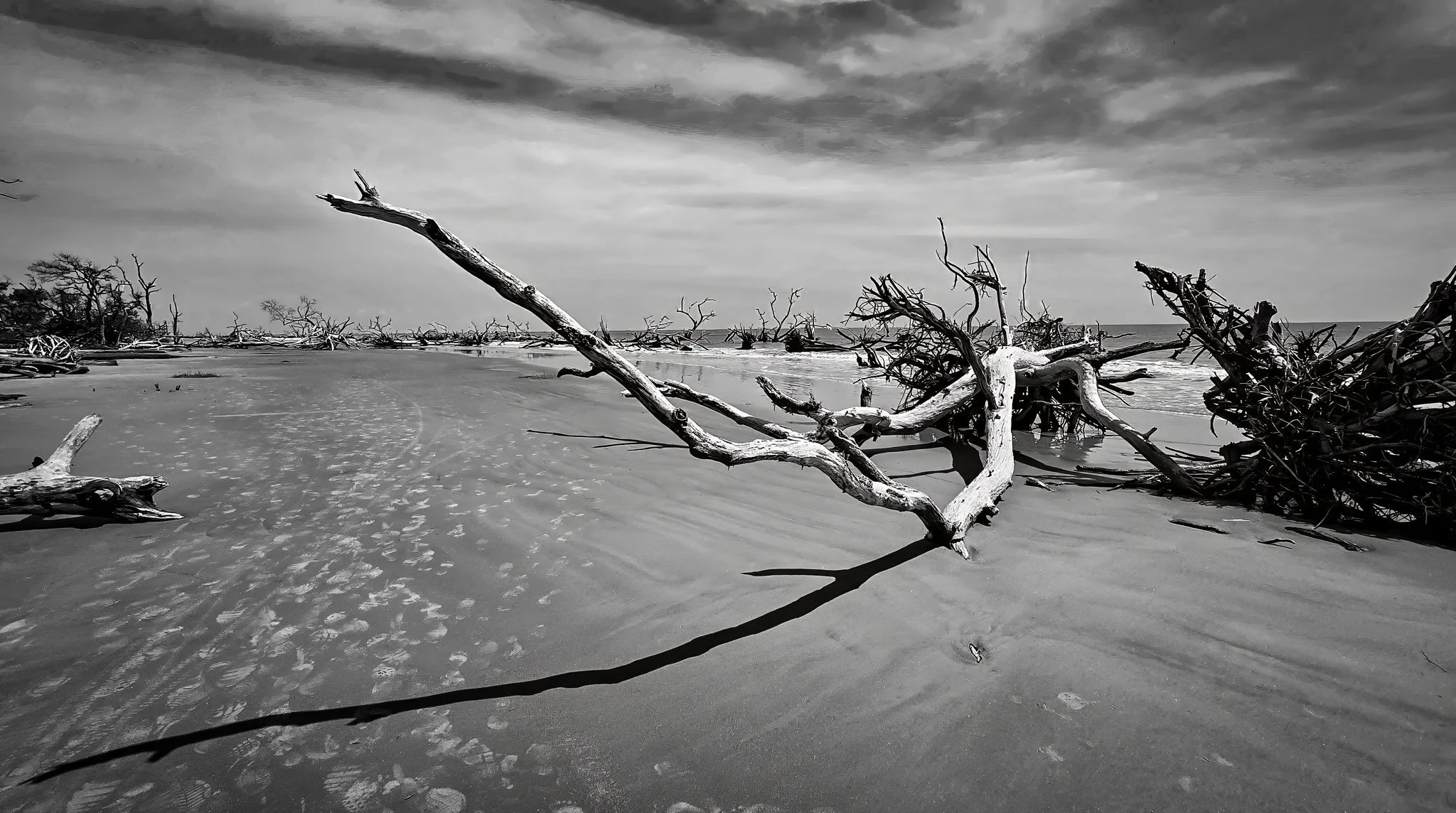Chasing the Light
A Photographer's Guide to Four Unforgettable South Carolina ParkS
(Or: How I Filled My Memory Cards and Got Sand in Places I Can’t Mention)
As an Amazon Associate, I earn from qualifying purchases. This means if you click a link and buy something, I get a small commission at no extra cost to you. It's how I fund my crippling addiction to fudge and new camera gear.
There’s a certain magic in returning from a trip with more than just photos. I’m talking about the good stuff: a story to tell, boots that are a little more scuffed, and pockets mysteriously full of sand. It’s a feeling I chase, and these four South Carolina state parks deliver it every single time, each with its own unique light and rhythm.
So, grab your camera. Let’s go on a little tour.
Before You Hit the RoaD
(The Not-So-Fun But Very Important Bit)
A quick PSA before we dive in. Nature is wild and doesn't always check its email. Always visit the park's official website for the latest updates on hours, closures, or advisories. Pack more water than you think you’ll need, wear layers (because South Carolina weather likes to keep you guessing), and give the wildlife the personal space they so clearly deserve. Seriously, that alligator does not want to be in your selfie. And if you're flying a drone, be a good pilot: read the park rules first and follow federal guidelines.
Rainbow Falls at Jones Gap, a camouflaged alligator in duckweed at Huntington Beach, a heron standing in clear shallows near Woods Bay, and sun-bleached driftwood scattered across the shoreline at Hunting Island.
1. Woods Bay State Park: The Cypress Cathedral
Step onto the boardwalk at Woods Bay, and the world goes quiet. You’re suspended over blackwater that holds the sky like a polished mirror. All around you, cypress knees jut out of the water, fat and knuckled, like a choir of ancient roots caught mid-song.
My first move is always to find an overlook and just… wait. I let the ripples from my own footsteps settle until the water is glass. When the reflections get so bright they threaten to blow out my highlights, I twist on a circular polarizer. (A quick pro tip: filters aren't one-size-fits-all. Check the front of your lens for its filter thread size—it looks like a circle with a slash through it, like ø67mm—to make sure you buy the right one.) Think of it as sunglasses for your camera—it cuts the glare and deepens the greens without completely killing that gorgeous mirror effect. The air here is soft, damp, and determined to leave a smudge on your lens, so a microfiber cloth will become your best friend. I keep mine in a lightweight daypack, which also keeps my hands free to grip the rail when I'm leaning way too far over to frame the perfect shot.
The secret to Woods Bay is changing your elevation, not your location. Kneel down, and the world becomes a vast pane of water and sky. Stand on your toes, and you can layer the cypress trunks against the clouds. Walk the full 1,150-foot boardwalk that threads through the swamp; it’s a masterclass in composition. If water levels are cooperating, the canoe trail offers a whole new perspective on this rare Carolina bay. Just be sure to call ahead about conditions and rentals.
What stays with me about Woods Bay is its quiet generosity. You can spend an hour watching gators from the safety of the mill-pond loop, or simply stand still and listen to the birds stitch the air with their calls. It’s a low-stress classroom for patience and seeing.
The After-Shot: If you start early, reward yourself with a late breakfast at Baker’s Sweets on Main in nearby Lake City. A few cubes of their fudge for the road never hurts, and let's be honest, it's practically a requirement for a successful trip.
Field Notes: Woods Bay
Best Light: First light through midmorning on a still, windless day.
Key Vantage Points: The boardwalk overlooks and the short mill-pond loop.
Photo Challenge: Make three frames from one spot: one at knee height, one at eye level, and one focusing only on a reflection.
In the Bag: Circular polarizer, microfiber cloths, light daypack, and some serious insect repellent.
Local Pause: Coffee and baked goods in Lake City. You've earned it.
A favorite shot from a quiet morning at Woods Bay State Park. Sometimes, the best way to handle a bright, overcast sky is to embrace it. By exposing for the robin, the background went completely white, creating this high-key portrait that I just love. It’s a great reminder that even the most familiar backyard birds can make for a striking subject.
A moment of perfect stillness as the afternoon sun begins to set. I was exploring one of the local waterways here in South Carolina and was thrilled to see the golden hour light catch this heron so perfectly. It’s moments like these that make wildlife photography so rewarding.
2. Huntington Beach State Park & Brookgreen Gardens: Birds, Gators, and Bronzes
The show at Huntington starts on the causeway. Egrets and herons strut through the shallows like supermodels on a catwalk. Every so often, a dark log floats nearby… until it blinks. Pro tip: don't poke the logs. I like to find a spot in the grass, get low, and let the birds forget I’m there.
My go-to lens for parks like this is the Fujifilm XF 70-300mm OIS WR. Its reach lets me capture that perfect egret side-eye without invading its personal bubble, the weather resistance (WR) means I don’t panic if it starts to drizzle, and the image stabilization (OIS) helps keep shots sharp even without a tripod. Of course, you don't need this exact lens—any good telephoto zoom will be your best friend for wildlife and compressing distant landscapes. A quick scan with a pair of binoculars will tell you where the action is before you even lift your camera. The sea air can turn on a dime, so a simple camera rain cover lives in my bag, just in case.
Huntington is a Lowcountry classic for a reason. The causeway is an all-day wildlife theater, and the park’s freshwater ponds are famous for gator sightings (from a safe distance, of course). When the sun gets harsh, I pull the ultimate switcheroo: I cross U.S. 17 to Brookgreen Gardens.
Instantly, the world changes. You trade wild salt marsh for manicured shade, cool water, and quiet geometry. Here, the practice is restraint. It's about holding a perfectly clean horizon on a reflecting pool, centering a sculpture with purpose, and letting stillness be your subject. Brookgreen isn't just a garden; it's the largest collection of American figurative sculpture in the country. Your ticket is good for seven consecutive days—an open invitation to slow down and see the light change.
If you’ve still got gas in the tank, the Murrells Inlet MarshWalk offers casual dinners and live music right over the water. Salt on the air, camera zipped away, a day well spent.
Field Notes: Huntington Beach + Brookgreen
Best Light: Golden hour on the causeway for wildlife; late morning in Brookgreen's shaded alleys; sunset on the beach.
Key Vantage Points: Causeway pull-offs, Atalaya Castle’s graphic lines, and Brookgreen’s reflecting pools.
Photo Challenge: One tight wildlife portrait, one perfectly symmetrical garden shot, one minimalist beach horizon.
In the Bag: Telephoto zoom, binoculars, a circular polarizer, and a rain cover for your camera.
Local Pause: Brookgreen for art and shade, then dinner on the MarshWalk.
A truly prehistoric scene from the causeway at Huntington Beach State Park. I love how the dappled sunlight made the swamp glow and created such dramatic shadows. This friendly log was perfectly still, enjoying the afternoon sun in the green duckweed—an unforgettable South Carolina moment.
Even on a hot South Carolina afternoon, I find myself dreaming of cooler nights and holiday lights. This photo is a favorite memory from 'Nights of a Thousand Candles' at Brookgreen Gardens. There's truly nothing as magical as seeing the ancient oaks lit up and the candles floating on the water. It's a photographer's dream and a South Carolina tradition that I can't wait for.
3. Jones Gap State Park: The Stairmaster with a Payoff
Welcome to the mountain's personal leg-day routine. Cold, clear water tumbles through this valley, and the trail follows, flickering with sunlight filtered through hemlock and rhododendron. Then, the trail to Rainbow Falls breaks off and gets serious. It climbs over a series of rocky steps that feel purposefully carved to test your resolve. My advice? Embrace the pace. This is a simple-kit kind of place.
When you finally reach the falls, mist clinging to your face, you’ll know it was worth it. I always make two very different photographs here. First, a fast shutter speed to freeze the raw power of the water, catching the spray like suspended threads. Then, I screw on a neutral-density (ND) filter to force a long exposure, transforming that roaring chaos into smooth, dreamlike silk.
The spray gets everywhere, so a compact, sturdy tripod that can sit steady on slick rock is a must. And remember your best friend from Woods Bay? Bring extra microfiber cloths. Trust me. The descent is much kinder on your knees with a pair of trekking poles, which also double as a great way to keep your balance (and your camera) from taking an unscheduled dive.
Jones Gap is a place that asks for your full attention—cell service is a myth here—and it gives you profound quiet in return.
The After-Shot: Make a beeline for Travelers Rest and refuel at Tandem Crêperie. A hot, savory crepe after being soaked in cold mountain mist is a reward of the highest order.
Field Notes: Jones Gap
Best Light: Overcast days are perfect for bringing out the texture in the water and rocks without harsh shadows.
Key Vantage Points: The stone staircases for leading lines, river bends for low-angle shots, and the base of the falls.
Photo Challenge: One "muscle" shot (fast shutter), one "silk" shot (long exposure), and one detail of moss on a wet rock.
In the Bag: ND filter, compact tripod, microfiber cloths, trekking poles, and a well-deserved snack.
Local Pause: Tandem Crêperie in Travelers Rest. Don't even think about it, just go.
If you know the hike to Rainbow Falls at Jones Gap, you know the feeling of finally seeing this. It's one of the most rewarding views in the South Carolina Upstate. I wanted to capture the power and the scale of the falls, using a long exposure to smooth the water and a moody color grade to create a scene that feels as epic as the trek to get there.
4. Hunting Island State Park: Skeletons at Sunrise
I try to arrive at the boneyard beach while the sky is still a deep, sleepy blue. In the dim light, the fallen trees look like ancient skeletons, their twisted roots reaching for a horizon that’s just beginning to glow. This is a game of patience. I find a composition I like—a weathered trunk against the sea—and wait for a small wave to rush in and polish the foreground. A circular polarizer helps tame the glare on the wet sand and wood, making the colors sing.
Since you'll be dancing with the tide, a dry bag for your phone and keys is non-negotiable, and a good pair of water-friendly shoes means you won't be doing that awkward hop-and-wince over sharp shells.
Hunting Island is South Carolina's most-visited state park for a reason. Its famous boneyard is constantly reshaped by storms and tides, a landscape that feels powerfully alive even in its decay. Every visit is different. After the sun is up, I’ll often brush the sand off and head inland to St. Helena Island for authentic Gullah Grub, or into historic downtown Beaufort for a classic sandwich at Lowcountry Produce. The day ends salty, sandy, and quiet. Just as it should.
Field Notes: Hunting Island
Best Light: Blue hour through sunrise is non-negotiable for the boneyard. Late evening offers pastel skies.
Key Vantage Points: The boneyard for dramatic silhouettes, the lighthouse for a sense of scale, and the maritime forest trails for texture.
Photo Challenge: One clean silhouette against the dawn sky, one abstract detail of polished driftwood, one shot of a light-dappled forest path.
In the Bag: Polarizer, microfiber cloths, a dry bag, water shoes, a hat, and sunscreen.
Local Pause: Gullah Grub on St. Helena Island or Lowcountry Produce in Beaufort.
There's a haunting beauty to the Boneyard Beach at Hunting Island State Park. Walking among these skeletal giants feels like stepping into another world. I chose to process this image in black and white to really emphasize the stark textures and the dramatic shapes the fallen trees make against the sky. It's a truly unforgettable South Carolina landscape.
Your Go-Bag for a Great Day
The philosophy is simple: carry what you need, and leave the rest in the car. Heavy bags make for tired photographers. Here's the core kit that gets me through days like these: a camera, a spare battery, a polarizer, a cloth, water, a snack, and a healthy respect for the wild.
Gear Up: My South Carolina Park Kit
Below is the gear that made these shots happen. If you find something you like, using these links helps support this blog so I can keep exploring (and eating fudge).
Circular Polarizer: — The secret sauce for rich colors and glare-free water. Make sure to get the right size for your lens!
Lightweight Daypack: — To carry your stuff without feeling like you’re hauling luggage up a mountain. Hands-free is happy-free.
Microfiber Cloths (plural!): — Because one will inevitably get damp or fall in the sand. Be a hero, bring a backup.
Telephoto Zoom Lens (like the Fujifilm XF 70-300mm): — For getting up close and personal with wildlife without, you know, actually getting up close and personal.
Binoculars: — To spot the birds before they spot you. Cheaper than a telephoto, and great for scouting.
Camera Rain Cover: — A glorified plastic bag that can save your thousands-of-dollars camera from a surprise shower. Worth it.
Neutral-Density (ND) Filter: — Your ticket to those silky, ethereal waterfall shots. Just like the polarizer, double-check your lens's filter size before buying.
Compact Tripod: — For getting sharp, stable shots without lugging around a beast. Essential for long exposures.
Trekking Poles: — Your knees will write you a thank-you note on the way down from Jones Gap.
Dry Bag: — Because "water-resistant" and "submerged in the Atlantic" are two very different things. Protect your valuables.
Water-Friendly Shoes: — For confidently striding through tidal pools instead of tiptoeing. Game-changer.
Insect Repellent: — Don't be a hero. The mosquitoes in the Lowcountry are competitive.
If any of these items help you gear up for your own adventure, using these links is a fantastic way to support my little corner of the internet. Now go get those boots scuffed.






